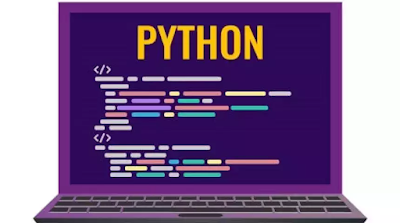Introduction:
In the ever-evolving landscape of technology, Python stands tall as one of the most versatile and widely used programming languages. As we step into the year 2023, developers and businesses alike must stay abreast of the latest trends shaping the Python development ecosystem. This article delves into the key Python development trends that cannot be ignored in 2023-24.
Python 3 Adoption: Leaving Python 2 Behind -
While Python 2 was officially sunset in 2020, the migration to Python 3 is an ongoing process. In 2023-24, the community is expected to be fully committed to Python 3, ensuring enhanced security, performance, and access to the latest features. Developers should prioritize updating their codebases and libraries to remain in sync with the latest Python 3 releases.
Rise of Microservices Architecture -
Microservices architecture continues to gain momentum as a preferred approach for building scalable and modular applications. Python, with frameworks like Flask and FastAPI, is well-suited for microservices development. In 2023-24, we can anticipate an increased focus on developing lightweight, decoupled services that can be independently deployed, updated, and scaled.
Artificial Intelligence (AI) and Machine Learning (ML) Integration -
Python has long been the language of choice for AI and ML development, thanks to libraries like TensorFlow, PyTorch, and sci-kit-learn. In the coming years, the integration of AI and ML into various applications is set to surge. Developers can expect advancements in natural language processing, computer vision, and reinforcement learning, with Python at the forefront of these innovations.
Web Assembly (Wasm) for High-Performance Computing -
Web Assembly is gaining traction as a technology that enables high-performance computing in the browser. While traditionally associated with languages like C and C++, Python is not left behind. Projects like Pyodide and PyodidePy enable running Python code in the browser using Web Assembly. This trend is expected to grow, opening new possibilities for web-based applications with Python.
Serverless Computing with Python -
Serverless computing abstracts infrastructure management, allowing developers to focus solely on writing code. Python is well-suited for serverless architectures, and in 2023-24, we can expect an increased adoption of serverless platforms like AWS Lambda, Azure Functions, and Google Cloud Functions. This trend simplifies deployment, enhances scalability, and reduces operational overhead for developers.
Blockchain and Smart Contracts Development -
With the rise of blockchain technologies, Python is becoming a preferred language for developing decentralized applications (DApps) and smart contracts. In the coming years, we can anticipate increased activity in the blockchain space, with Python providing tools and frameworks for developers to create secure and efficient blockchain applications.
Progressive Web Applications (PWAs) with Django -
Django, a popular Python web framework, is evolving to support the development of Progressive Web Applications. PWAs combine the best of web and mobile applications, offering a seamless user experience. As the demand for responsive and engaging web applications grows, the integration of Django with PWA principles is set to be a significant trend in Python web development.
Enhanced DevOps Practices -
DevOps practices are fundamental for achieving efficiency in the software development lifecycle. Python's simplicity and extensive library support make it an excellent choice for implementing DevOps automation. In 2023-24, we can expect an increased emphasis on leveraging Python for continuous integration, continuous delivery, and infrastructure as code to streamline development workflows.
Enhancements in Data Science and Analytics -
Python has established itself as a go-to language for data science and analytics. In the coming years, we can anticipate enhanced libraries and tools for data manipulation, analysis, and visualization. The synergy between Python and big data technologies like Apache Spark and Dask is expected to create more powerful solutions for handling large datasets and performing complex analyses.
Cybersecurity with Python -
With the growing complexity of cyber threats, cybersecurity is a top priority for organizations. Python's simplicity and versatility make it an attractive choice for developing security tools and scripts. In 2023-24, we can expect an increased focus on using Python for cybersecurity applications, including penetration testing, threat detection, and incident response.
Conclusion:
As we navigate the dynamic landscape of technology, staying informed about the latest trends is crucial for developers and businesses relying on Python for their projects. The trends outlined in this article provide a roadmap for embracing the future of Python development in 2023-24. From AI and microservices to serverless computing and blockchain, Python continues to evolve, offering a robust foundation for innovative and scalable solutions. By embracing these trends, developers can position themselves at the forefront of the Python ecosystem, driving success in the ever-changing world of technology.



